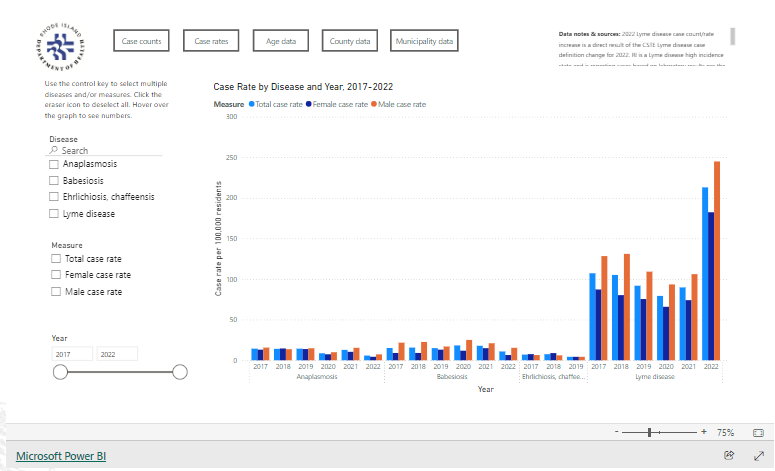Babesiosis
Babesiosis is a potentially severe, and sometimes fatal tick-borne disease caused by an infection with a red blood cell parasite. A more severe and prolonged illness is more likely to be found in persons older than 60, those who have had their spleen removed, and those who are immunocompromised (e.g. persons with HIV infection or AIDS).
Symptoms
Most people in the US who become infected with babesiosis will experience no symptoms, but others could have fatigue, fever, malaise, jaundice, and anemia. Symptoms can last from several days to several months and usually appear 1-4 weeks after infection. In asymptomatic individuals, the disease typically goes away on its own.
At-Risk Populations
Babesiosis is sometimes fatal, especially in the elderly, those with compromised immune systems, and those who have had their spleens removed.
How It Spreads
It spreads through the bite of infected ticks.
Prevention
Reducing exposure to ticks is the best defense against Lyme disease, Rocky Mountain spotted fever, Babesiosis, Ehrlichiosis, and other tickborne infections.
Testing & Diagnosis
In symptomatic people, babesiosis usually is diagnosed by examining blood specimens under a microscope and seeing Babesia parasites inside red blood cells. Other methods such as serology and molecular methods can also be used.
Treatment
Babesiosis can be treated with antibiotics.

